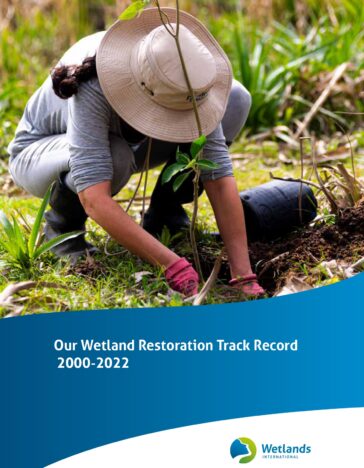
Our Wetland Restoration Track Record 2000 – 2022
Restoring degraded wetlands has never been more urgent. Wetlands are key for biodiversity and maintaining the hydrological cycle and constitute a large reservoir of carbon, and yet, 90% of these ecosystems have been drained and degraded for other land uses. The benefits of restoring wetlands are many, from improving biodiversity to protecting water, providing people with new sources of income, and storing carbon, thereby slowing future heating but their restoration remains as a challenge.
Under the United Nations Decade on Ecosystem Restoration, and regional initiatives, such as Initiative 20×20 in Latin America and AFR100 in Africa, wetland restoration has been prioritized as a key action to achieve global restoration pledges, Kunming-Montreal targets as well as countries’ commitments under the Paris Accord.
This report presents the state of the art of wetland restoration by showcasing 30 projects in 17 countries around the world, highlighting the challenges and opportunities and, most importantly, key lessons learned to improve the effectiveness of restoration for people and nature.
Severely degraded wetlands can be restored when people, organizations and governments work together, respecting different perspectives but enabling local leadership to co-create restoration strategies and implement effective solutions.
We also hope this report will inspire different stakeholders to take action on restoring degraded wetlands. In Initiative 20×20, we are immensely grateful for this work as Wetlands International has supported our Task Force on Wetland Restoration, convening different stakeholders to present evidence that positive change is possible.
Wetland restoration at scale is the narrow bridge across which we must walk if we are to realize our restoration ambitions of going beyond increasing forest cover and towards functional landscapes.
Read the publication here.

